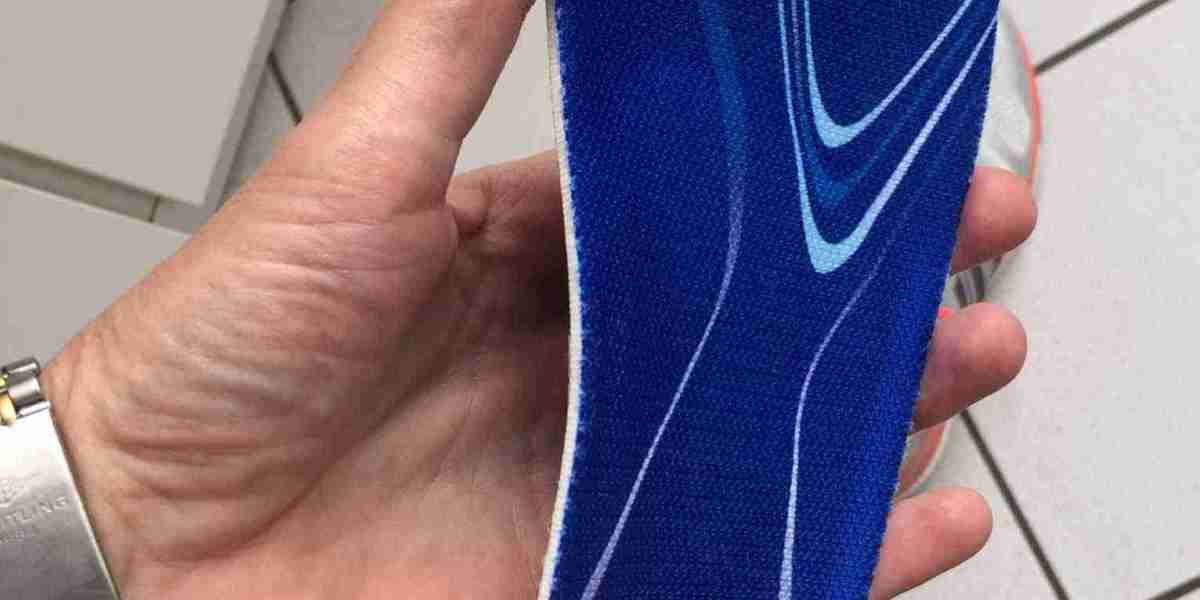Running is a high-impact sport that places significant stress on the feet and lower body. For runners, especially those covering long distances or running frequently, effective shock absorbing insoles can make a crucial difference in comfort, performance, and injury prevention. These insoles are designed to cushion the feet, absorb impact, and reduce the strain on joints and muscles. In this article, we will explore the key features that make shock absorbing insoles effective for runners.
1. Superior Cushioning Material
Gel Inserts
Gel inserts are a popular choice for shock absorption. They provide a soft, flexible cushioning that adapts to the shape of the foot, distributing pressure evenly. The gel absorbs the impact of each step, reducing stress on the feet and lower body. This can be particularly beneficial for runners with a neutral or high arch, as it offers targeted support where it's needed most.
Foam Padding
Foam padding, especially high-density foams like EVA (ethylene vinyl acetate) and polyurethane, is another excellent material for insoles. These foams are lightweight yet durable, providing consistent cushioning over time. They compress under pressure to absorb shock and then return to their original shape, ensuring ongoing support and comfort.
Memory Foam
Memory foam insoles conform to the unique shape of the foot, providing personalized support. This type of foam reacts to body heat and pressure, offering a customized fit that can help reduce hotspots and pressure points. Memory foam is particularly effective for runners with specific foot issues, such as bunions or plantar fasciitis, as it can provide targeted relief.
2. Arch Support
Customized Arch Profiles
Effective shock absorbing insoles offer varying levels of arch support to match different foot types. For runners with flat feet, insoles with a lower arch profile provide the necessary support to prevent overpronation (excessive inward rolling of the foot). Conversely, runners with high arches require insoles with a higher arch profile to distribute weight more evenly and prevent underpronation (outward rolling).
Dynamic Arch Technology
Some advanced insoles incorporate dynamic arch technology, which adjusts to the foot’s movement and weight distribution. This adaptive support can help maintain proper alignment and reduce the risk of injury by supporting the foot through the entire gait cycle.
3. Heel Cushioning and Stability
Heel Cups
A deep heel cup is a critical feature for effective shock absorption. It cradles the heel, providing stability and preventing it from sliding within the shoe. This stability is essential for maintaining proper alignment and reducing stress on the Achilles tendon and lower leg muscles.
Heel Pads
Heel pads made from gel or foam offer additional cushioning directly under the heel. This can be particularly beneficial for runners who experience heel pain or conditions like plantar fasciitis. The extra padding absorbs the initial impact of heel strikes, reducing stress on the heel bone and surrounding tissues.
4. Breathability and Moisture Management
Ventilation Channels
Insoles designed for runners often include ventilation channels or perforations that enhance airflow. This feature helps keep feet cool and dry, reducing the risk of blisters and fungal infections. Proper ventilation also enhances comfort, particularly during long runs in hot conditions.
Moisture-Wicking Materials
Materials that wick moisture away from the skin are essential for maintaining foot health. Insoles with moisture-wicking properties draw sweat away from the foot, helping to keep it dry and reducing the likelihood of irritation and blisters. This is particularly important for runners who sweat heavily or run in humid conditions.
5. Durability and Longevity
High-Quality Construction
The durability of insoles is a crucial consideration for runners who log many miles. High-quality insoles are constructed from robust materials that withstand repeated use without breaking down. Features like reinforced arch supports and durable top layers ensure that the insoles provide consistent performance over time.
Replacement Frequency
Understanding the typical lifespan of insoles can help runners maintain optimal support and shock absorption. Most insoles need to be replaced every 6-12 months, depending on usage and the material's durability. Regular replacement ensures that the insoles continue to provide the necessary support and cushioning.
6. Proper Fit and Sizing
Trim-to-Fit Options
Many effective insoles come in trim-to-fit designs, allowing runners to customize the size to fit their shoes perfectly. This ensures that the insoles provide maximum coverage and support without slipping or bunching. Proper fit is essential for preventing blisters and ensuring that the insoles perform as intended.
Different Sizes for Different Shoes
Runners often use different shoes for various types of runs (eg, road running, trail running). Effective insoles are available in multiple sizes to fit different shoe types, ensuring that runners can benefit from consistent support and shock absorption regardless of the shoe they're wearing.
7. Lightweight Design
Minimum Bulk
Runners need insoles that provide effective shock absorption without adding significant weight or bulk to their shoes. Lightweight insoles help maintain the natural feel of the shoe and do not interfere with the runner's stride. Advanced materials and design techniques can achieve this balance, offering robust support and cushioning in a slim profile.
Maintaining Shoe Fit
Insoles that are too thick can alter the fit of a running shoe, potentially causing discomfort or affecting performance. Effective shock absorbing insoles are designed to integrate seamlessly with running shoes, maintaining the intended fit and feel while enhancing comfort and support.
8. Additional Support Features
Metatarsal Pads
For runners who experience forefoot pain, insoles with built-in metatarsal pads can provide significant relief. These pads support the metatarsal arch, distributing pressure more evenly across the forefoot and reducing pain associated with conditions like metatarsalgia.
Orthotic Design
Custom orthotic insoles designed based on a runner's specific foot structure and gait, can offer superior shock absorption and support. While more expensive than over-the-counter options, custom orthotics address individual biomechanical issues, providing tailored relief and performance enhancement.
Effective shock absorbing insoles are a critical component of a runner's gear, offering enhanced comfort, reducing the risk of injury, and improving overall performance. Key features such as superior cushioning materials, tailored arch support, heel cushioning, breathability, durability, proper fit, lightweight design, and additional support elements make these insoles indispensable for serious runners. By understanding and prioritizing these features, runners can select insoles that best meet their needs, helping them to run farther, faster, and more comfortably.







